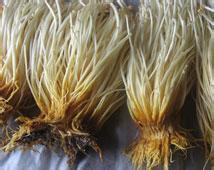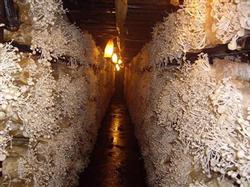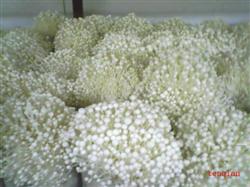Control methods of root rot of Flammulina velutipes

The basic rot of Flammulina velutipes is also called root rot, which mostly occurs in Flammulina velutipes cultivated with raw materials, but it is also common in clinker cultivation and bottle cultivation in recent years, and the harm is more serious. Symptoms: in the early stage of the disease, waterlogged spots appeared at the base of the stalk, which gradually expanded with the development of the disease, and the color gradually deepened, and then became dark brown and rotten. In the fruiting body development stage, the base of the stalk became dark brown to black rotten, and after the base rotted, the fruiting body lodged. Young mushroom disease, will not lodge, gradually atrophy and stop growing. Pathogen: Penicillium penicillium, which belongs to the subphylum Penicillium. When growing on potato sucrose Agar medium, the hyphae are gray-white, slender and grow fast. After the formation of conidia, the colony became gray-white powder, the culture medium of the lower part of the colony turned crimson or purple, and then the whole colony was pink. Under the microscope, the conidiophores grew on the hyphae and grew in a finger shape, and a long chain of conidia was formed at the top. After the conidia matured, they fell off from the top of the chain. Characteristics of the disease: most of the bacteria live in the soil and organic matter, and the parasitism is weak, mainly saprophytic life, and can be transmitted through the air for the first time, in the environment of medium temperature and high humidity or low temperature and high humidity, especially under the condition of stagnant water on the surface of the culture material for a long time, the bacteria were infected, mostly invaded from the stalk, and the disease spread quickly. There was no infection on the fruiting body of Pleurotus ostreatus after many times of artificial inoculation. The disease occurred more frequently in indoor cultivation and occurred on the mushroom bed cultivated with raw cottonseed hulls. Prevention and control methods (1) in the preparation of culture materials, the water content should be strictly controlled to avoid stagnant water on the mushroom bed for a long time in the fruiting body growth stage. (2) do a good job in the environmental hygiene of the mushroom room, timely ventilation and ventilation, and control the air relative humidity not to exceed 95%. (3) if diseased mushrooms are found by chemical control, remove them in time, and then spray 25% carbendazim of 500 times of carbendazim or 70% thiophanate of methyl of 800 times of carbendazim, or 65% zinc of zinc of 65% of zinc of 500 times of 1Drex. Commonly used agents: carbendazim, methyl topiramate, Dysen zinc.
- Prev

New cultivation techniques of Flammulina velutipes with raw materials in greenhouse
The main results are as follows: 1. The fruiting bodies are clustered, the cap is 2-15 cm in diameter, hemispherical, the lid edge is rolled in, and then gradually unfolds in a flat shape. The stalk is straight, 2-13 cm long, 2-8 cm in diameter, nearly as thick as the top and bottom, solid at the initial stage and hollow at the later stage. There are two types of varieties, white and yellow, white is suitable for processing.
- Next

A New method of efficient cultivation of Flammulina velutipes
Although the traditional cultivation of Flammulina velutipes can harvest three crops of mushrooms, the highest bioconversion rate can only reach 100%, the growth period is about 95 days, and there are only three cultivation cycles in one year, and the stalk of the third crop is short and thick, easy to open the umbrella cover, and the commercial quality is very poor, affecting the economic benefits. The one-time mushroom harvesting and cultivation method studied by our center.
Related
- Fuxing push coffee new agricultural production and marketing class: lack of small-scale processing plants
- Jujube rice field leisure farm deep ploughing Yilan for five years to create a space for organic food and play
- Nongyu Farm-A trial of organic papaya for brave women with advanced technology
- Four points for attention in the prevention and control of diseases and insect pests of edible fungi
- How to add nutrient solution to Edible Fungi
- Is there any good way to control edible fungus mites?
- Open Inoculation Technology of Edible Fungi
- Is there any clever way to use fertilizer for edible fungus in winter?
- What agents are used to kill the pathogens of edible fungi in the mushroom shed?
- Rapid drying of Edible Fungi

